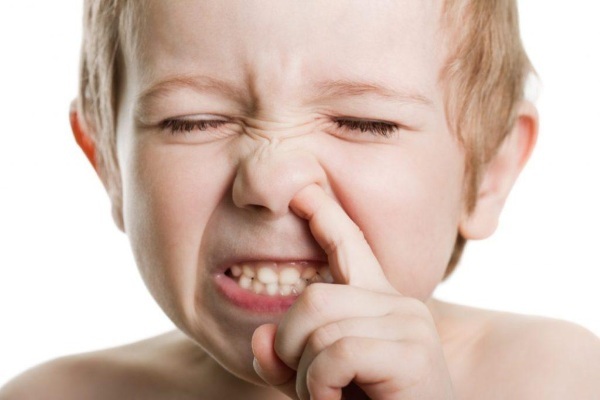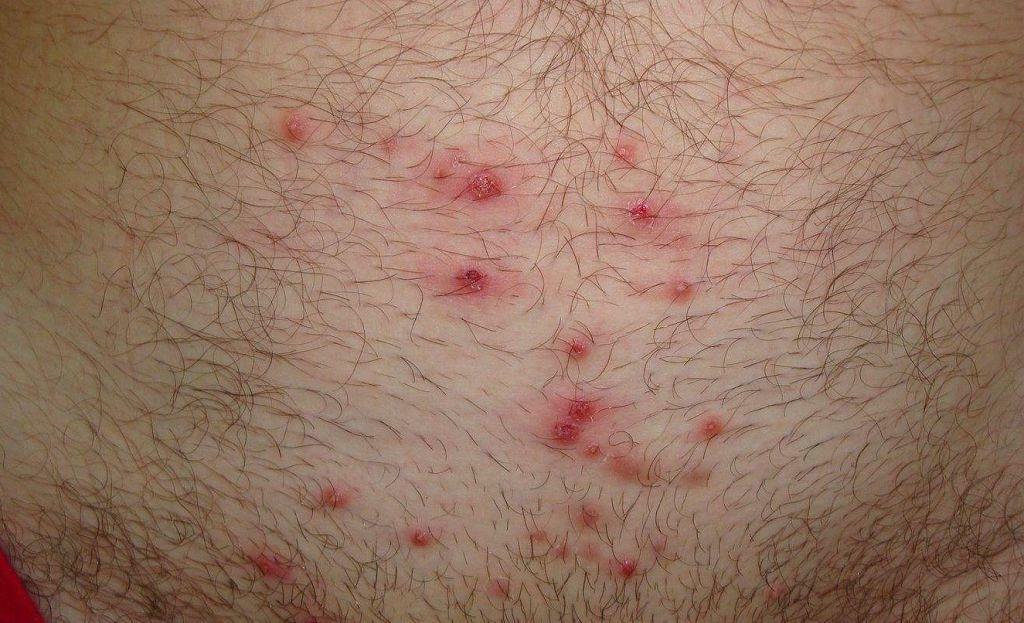Moraxella catarralis is pathogenic microorganism that is the causative agent of various infectious diseases. Colonies of pathogens are more often detected in a child's nose.
In the absence of timely diagnosis and therapy, bacteria penetrate into the lower parts of the respiratory system and provoke serious diseases. It is impossible to treat a child on your own, it is important to correctly establish the diagnosis, which can be done by a pediatrician or an otolaryngologist.
Record content:
- 1 Moraxella catarrhalis - what is it?
- 2 Localization of bacteria in the child's nose
- 3 Signs of Moraxella Catarlis' Presence
- 4 Infection risk factors
- 5 The degree of development of the infection, signs
- 6 What is the danger of moraxella catarlis?
- 7 Diagnostics
- 8 Decoding the results
-
9 How to treat a child's nose when infected with moraxella catarrhalis?
- 9.1 Medication
- 9.2 Folk remedies
- 10 Videos about infectious diseases
Moraxella catarrhalis - what is it?
Moraxella catarrhalis belongs to the group of aerobic gram-negative bacteria. It is the causative agent of various infectious diseases, against which an inflammatory process appears and affects the nasal mucosa (rhinitis, otitis media, sinusitis, chronic bronchitis).
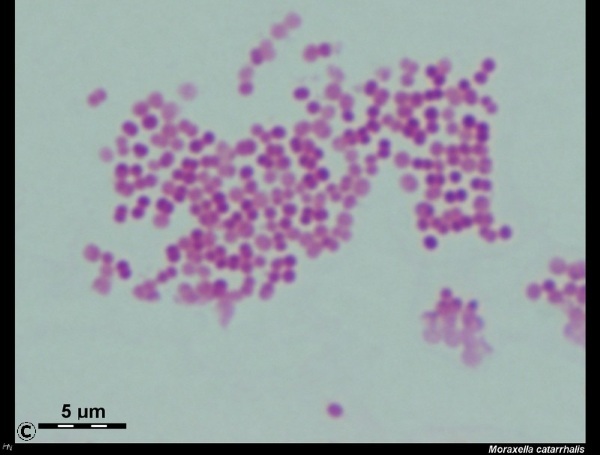
The pathogenic flora in most cases settles on the tonsils and adenoids in children. It provokes the development of a chronic focus of endogenous infection.
Localization of bacteria in the child's nose
The bulk of the pathogenic microflora lives on the mucous membrane in the nose. In some children, bacteria are also found in the genitourinary system or in the eyes. Pathogenic microorganisms are activated when the child's immunity decreases. Diagnostics and treatment are carried out by a pediatrician; in addition, you may need to consult an otolaryngologist, given the condition of the little patient.
Signs of Moraxella Catarlis' Presence
The clinical picture of the disease depends on the area of localization of the inflammatory process. Pathogenic microorganisms enter the nasal mucosa and begin to multiply. Pathological processes often develop against the background of reduced immunity and low resistance of the child's body.
The clinical signs of moraxella catarlis are as follows:
| Place of defeat | Symptoms |
| Respiratory system organs |
|
| Middle ear |
|
| Scull |
|
| Nose |
|
| Eyes | The causative agents of the disease provoke an inflammatory process in the cornea and conjunctiva. Pathological changes are accompanied by the following symptoms:
|
| Genitourinary system |
|
Moraxella catarrhalis, developing in a child's nose, rarely provokes the appearance of sepsis, endocarditis, meningitis. The doctor will help to establish an accurate diagnosis, after a thorough diagnosis. It is important to go to the hospital in a timely manner in order to start treatment and prevent complications.
Infection risk factors
Children are more likely to get sick, because their immune system is formed and is easily amenable to various internal or external negative influences.
The risk of infection with moraxella catarrhalis increases under the influence of the following provoking factors:
- taking certain medications (immunosuppressants, clucocorticoids);

- development of bronchial asthma;
- the presence of concomitant diseases;
- premature birth of a baby;
- tobacco smoke;
- chronic diseases;
- malignant processes in the human body;
- tracheal intubation;
- abnormal formation of the interventricular septum;
- pulmonary dysplasia.
Unfavorable environmental conditions or a low standard of living also contribute to a decrease in immunity and an increased risk of developing moraxella catarrhalis. The same goes for the hereditary factor and the child's lifestyle.
The degree of development of the infection, signs
Moraxella catarrhalis in a child's nose appears as a result of infection by aerosol, airborne droplets or during direct contact with a sick person. Bacteria are released into the external environment along with sputum during sneezing or coughing.
In children, infection in most cases affects the upper respiratory tract. In some situations, under the influence of negative factors, pathogenic bacteria sink lower - into the lungs and bronchi. The inflammatory process leads to the development of bronchitis or pneumonia.
What is the danger of moraxella catarlis?
The danger of pathogenic bacteria is that they are difficult to differentiate. A false diagnosis involves an incorrectly selected therapy. Pathological processes progress and worsen the child's condition, which entails serious complications. The bacteria are resistant to antibacterial agents, so it is difficult to treat them and it takes a long time.
Complications of moraxella kataralis:
| Name | Description |
| Bronchitis | Pathogens that get on the mucous membrane of the nose or mouth multiply. They fall into the lower part of the respiratory system. With serious damage to the bronchi in severe situations, the disease flows into a chronic form.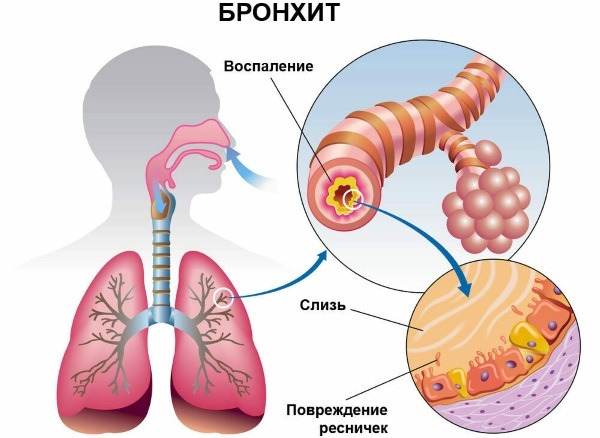
|
| Pneumonia | It is more often diagnosed in adults, but children are also at risk. The inflammatory process affects the lungs. |
| Chronic obstructive pulmonary disease (COPD) | A pathology in which the lower parts of the respiratory system become inflamed and the lungs swell. Chronic obstructive disease is more common among people who abuse tobacco products. In children, the disease appears after inhaling a large volume of cigarette smoke. |
| Meningitis | An inflammatory process of an infectious nature that affects the lining of the spinal cord and brain. |
| Endocarditis | Inflammatory infectious disease. Pathological processes are localized in the area of valves, endocardium, endothelium of the cardiac great vessels. Typical symptoms are bacteremia, as well as damage to internal organs or systems of the human body. |
| Orbital cellulitis | An acute purulent inflammatory process in the tissue of the orbit provokes its destruction and the appearance of purulent fusion of tissues. |
Pathogenic microorganisms cause the development of conjunctivitis. If you postpone the visit to a specialist and do not treat the disease, you may end up losing your eyesight.
Moraxella catarrhalis also provokes an inflammatory process in the area of the urethra and bladder. All complications require medical attention, since without the right therapy they are fatal in 50% of cases.
Diagnostics
Moraxella catarrhalis in a child's nose is determined by the result of an analysis prescribed by a pediatrician or otolaryngologist. The specialist will prescribe a complete medical diagnosis, taking into account the patient's complaints and the existing symptoms of the disease.
The survey includes the following tests:
| Name | Description |
| Bacteriological culture | The resulting material is examined in a laboratory to determine the type of causative agent of the disease and to select the most effective antibacterial agents. A nasal and pharyngeal swab is taken from the patient.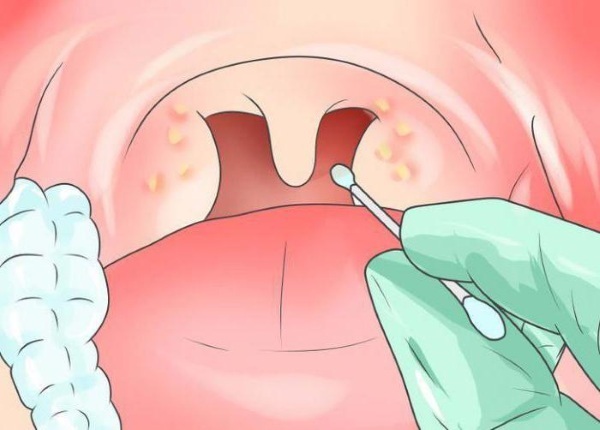
|
| General blood analysis | The results will help determine the general condition of the child's body, identify the presence of an inflammatory process. |
| General urine analysis | |
| Chest x-ray | Diagnostic methods are used for lesions of the respiratory system. |
| Computed tomography (CT) | |
| Bronchoscopy, rhinoscopy, laryngoscopy | Studies help evaluate lung function and external respiration. |
It is important to differentiate the disease, since the inflammatory process is accompanied by many symptoms similar to the manifestations of other pathologies. It is impossible to diagnose and choose a medicine on your own, it is dangerous to the health of the child.
Decoding the results
The pediatrician or otolaryngologist will help to decipher the results and establish an accurate diagnosis. It is impossible to independently determine the infectious lesion, and even more so to give medications, since the patient's condition can be aggravated.
Moraxella catarrhalis is an aerobic diplococcus. Pathogenic bacteria in most cases provoke the development of otitis media and chronic sinusitis in children, as well as pneumococcal pneumonia. Pathogens are always present in the human body, only under the influence of negative factors they are activated.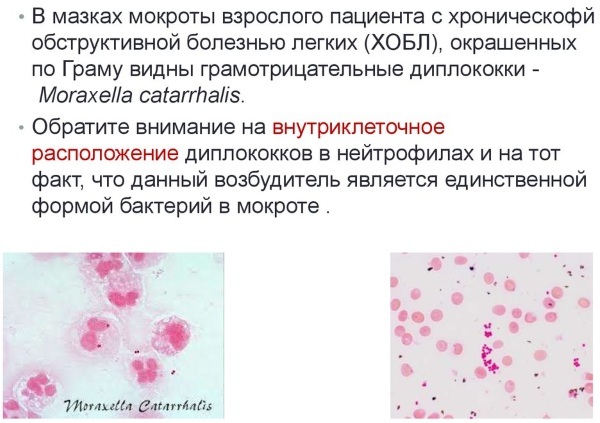
With the help of medical diagnostics, their presence and reproduction are revealed. Even newborns or premature babies are even exposed to infection, since weak immunity is just being formed. Its resistance to various diseases is low. It is important to establish an accurate diagnosis in a timely manner in order to start therapy and prevent possible complications.
How to treat a child's nose when infected with moraxella catarrhalis?
The therapy is carried out by complex methods, moraxella catarrhalis requires qualified medical care from a pediatrician or otolaryngologist. The child is prescribed medications, taking into account his condition and individual characteristics of the body. If there are no serious contraindications, the use of traditional medicine recipes is allowed, but strictly after consulting a doctor.
Medication
Moraxella catarrhalis in a child's nose necessarily requires antibiotic therapy and additional symptomatic treatment. The drugs are selected by the pediatrician, after examining the child and on the basis of the results obtained after the diagnosis. It is important to adhere strictly to the prescriptions, since medications provoke side effects.
| Drug group | Name | Application |
| Antibacterial agents | Ceftriaxone, Augmentin | Children's daily dosage is 20-75 mg / kg. The duration of treatment lasts 7-14 days. The course and treatment regimen depends on the condition of the little patient. |
| Antipyretic and anti-inflammatory drugs | Ibuprofen, Nurofen | Children's dosage depends on the age of the child. The doctor prescribes 2.5-15 ml 3 times a day. The maximum daily dosage is 7.5-45 ml. There should be no less than 6 hours between meals. |
| Expectorants and mucoliths | Ambroxol, Bromhexine | The medicine is recommended to be taken orally after meals. For children, the doctor prescribes 2.5-5 ml 2-3 times a day for 4-5 days. |
| Local antiseptics | Protargol, Sialor | The medicine is applied topically to lubricate the nasal mucosa. Children should drip 1-2 drops into each sinus, 2 times a day. |
| Means for rinsing the nose | Quicks, AquaMaris | The medicine is used to flush the nasal mucosa. It is recommended to irrigate the nasal passages 2-3 times a day for 1-2 injections. |
| Antihistamines | Suprastin, Tavegil | The medicine eliminates allergic symptoms (swelling of the mucous membrane, sneezing, nasal discharge). Children's dosage depends on age, more often the doctor prescribes ¼-½ tablets. The drug should be taken 2-3 times a day after meals. |
| Vasoconstrictor drops | Rinonorm, Tizin | Before using the medicine, the nasal passages should be cleaned. The pediatric dosage is 1 injection into each sinus 3 times a day. A time interval of 6 hours should be observed between the administration of the drug. The course of therapy lasts no more than 7 days. |
| Glucocorticosteroid medicines | Sofradex, Anuaran | For eye diseases, 1-2 drops are dripped to the child every 4 hours. The defeat of the ears involves a dosage of 1 to 2 drops 3-4 times a day. The course of treatment lasts 7 days. |
| Antimicrobial drops | Otofa, Normax | The medicine is applied topically, instilled into the ear canal. The recommended dosage for children is 3 drops 2-3 times a day. After the administration of the medication, the ear canal must be covered with cotton wool. The course of treatment lasts a maximum of 1-3 days. |

After eliminating the exacerbation of moraxella catarrhalis, the patient is prescribed general strengthening therapy with the intake of vitamin complexes, immunostimulating drugs. The dosage and treatment regimen is selected by the pediatrician, taking into account the condition of the child, the degree of development of pathological processes and the individual characteristics of the child's body.
Folk remedies
Prescriptions of healers and healers are used in complex therapy, together with medications and after consultation with a pediatrician. You cannot use folk remedies on your own, since the child may have an individual sensitivity or an allergic reaction to the components used.
Moraxella catarrhalis in a child's nose is treated with effective folk remedies:
| Name | Recipe | Application |
| chamomile | Pour 3 g of plant flowers with hot water (250 ml). Insist for 40 minutes and drain. | The finished product is used to rinse the nose. The procedures should be carried out 2 times a day. Chamomile is anti-inflammatory and quickly relieves symptoms of nasal disease. |
| Furacilin | Dissolve the medicine (1 tablet) in water (100 ml). Put the prepared solution on fire and boil for 3 minutes. | The resulting solution is rinsed with the nose. The medicine negatively affects the pathogenic bacteria that provoke the inflammatory process of the nasal mucosa (moraxella catarrhalis). |
| Sea buckthorn | Grind 50 g of the plant's berries well. Add 50 g of refined olive oil. Mix all components well and put in a cold place for 24 hours. When the medicine is infused, you must strain it. | The ready-made sea buckthorn product has anti-inflammatory and bactericidal effects. Patients are advised to drip 2 drops into each nasal passage 3 times a day. Clean the nose beforehand. |
| Kalanchoe | Keep the leaves of the plant in the refrigerator for a couple of days. Wash them well, chop and squeeze the juice. | The resulting juice is diluted with water and dripped into each nostril, 2 drops 3 times a day. The course of treatment lasts 7 days. |
| Aloe | The leaves of the plant must be cooled, chopped and squeezed out. | Aloe juice is used in its pure form. Every 4 hours, 2-3 drops are dripped into the nasal passages. |

Most of the products that are used for nasal instillation for children are advised to be diluted with water. It is important to adhere to the recommendations, since you can aggravate the child's condition, for example, burn the mucous membrane or provoke the development of otitis media. All methods used must be discussed with the doctor so as not to complicate the condition of the little patient.
Moraxella catarrhalis is rare, despite this, it provokes serious complications. The doctor recommends going to the hospital right away, especially if the child has the first symptoms. You should not treat your nose, throat and other foci of the disease yourself. Improper treatment will lead to negative consequences.
Videos about infectious diseases
Komarovsky about infectious diseases:

